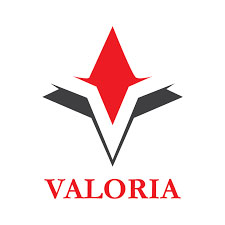The "Barometer of client-centricity in the Romanian companies 2018" is a study by the consulting company Valoria that gauges the perception of executives and managers about the client focus embedded in the company strategy and processes. This study looks at the client-centricity as a strategy that aligns the development and delivery of company’s products around client needs in order to increase the value of the company. The study presents comparative data of the 2018 edition with the 2017 edition.
According to the results of the questionnaire that received 723 responses, 78% of the companies said that the main obstacle to better client-centricity is the organizational culture that is not in line with client needs. Moreover, while 72% of companies consider understanding client needs to be the main value of the company, only 30% have client retention as one of their values.
"The new edition of Valoria’s study brings to light the internal and external client-centric processes of the companies and discovers their values expressed in relation to the client, as well as the challenges companies face in this area. Beyond information on budget developments, alignment with customer needs, and traceability of support services performance, the study provides a solid base for Romanian companies to better understand the initiatives to improve client focus, the tools used to collect client information, and the methodologies used", says Constantin Măgdălina, Emerging Trends & Technologies Expert, co-author of the research.
Client-centricity as part of the company's values
Each company has a constellation of values that influences not only the organizational culture but also client-centric approach. Thus, in 2018, 72% of the companies (-3pp compared to the previous year) say they are client-centered because they want to know the client needs better, while 65% (-9pp) have client satisfaction as the main value. At a distance, 31% (+2pp) believe that technology supports the client-centric relationship, 30% (+3pp) have client retention as the main value and 24% (+1pp) believe that all company employees are at the service of their customers. Only for 28% (+10pp) the experience of the client is an essential value.
In order to have a company with a customer-centric culture and processes, those values that support this direction need to be present in top management behavior, which has the task of communicating them further. In Romania, 44% of companies (-1pp) say they have this top-down communication model, where the message bearers are only the ones in the leadership. On the other hand, 36% (-2pp) of companies say they have a consistent internal communication that allows the dissemination of the customer-centric messages on all the structural and functional levels of the company.
Actions aimed at better a client-centricity
In order to be more client-centric, Romanian companies have the following approaches: 52% in 2018, compared with 42% in 2017, say they provide training for employees to understand the client-centric approach, 51% vs. 44% facilitate co-operation between company departments, 49% vs. 50% support the process creation efforts to deliver superior customer service, 33% vs. 30% have tools that help them prioritize the activities based on the impact on client, and 28% vs. 41% reward the top performers in excellent customer relationship with bonuses or promotions.
The 2018 edition of the study reveals the following challenges that prevent companies to be more client-centric: insufficient expertise in date analytics (71% in 2018, compared with 88% in 2017), the lack of technology platforms for customer data management (70% in 2018 versus 89% in 2017) and the lack of a common definition of what client-centricity means for the company (68% in 2018 compared to 73% a year earlier).
Initiatives to improve client experience
The improvements to client experience with the greatest impact in the business are prioritized by 61% of companies in 2018, compared with 73% in 2017, by customer satisfaction, 54% versus 59%, by the quality of the product or service, and 45% versus 41%, by the cost associated with the potential client revenues. In 2018, 30% of companies focus on reducing errors and defects (-10pp compared to 2017).
In 37% (-3pp) of Romanian companies, the top management develops the criteria for prioritizing initiatives to improve the client experience. However, 33% of the companies give this responsibility to the team of leaders of all departments (+1pp). Only in 8% of companies (+1pp) these criteria are developed by the customer relations department. In 2018, 8% of companies (+4pp) deal with this issue in the marketing department.
The Voice of the Customer is the methodology used by 53% of respondents in 2018 (+5pp) to improve client experience. This method is followed at a distance of 39 percentage points by the CxPi - Customer Experience Index (14%). On the other hand, in 2018, 12% (+1pp) of respondents say they use the Net Promoter Score method and 7% (+2pp) use the Customer Journey Mapping.
"Companies want to know their clients, collect information about their preferences and behaviors, analyze the data and make decisions. Client needs can no longer be satisfied only in during the purchasing process of the product or service, but also by the overall interaction with the company. When companies are centered on client needs, they allocate the right resources to increase their sales in a recurring and sustainable way. Despite knowing this, the results of our study show that many firms are still struggling to fully align themselves with the client-centric paradigm", says Elena Badea, Managing Partner Valoria, co-author of the study.
































